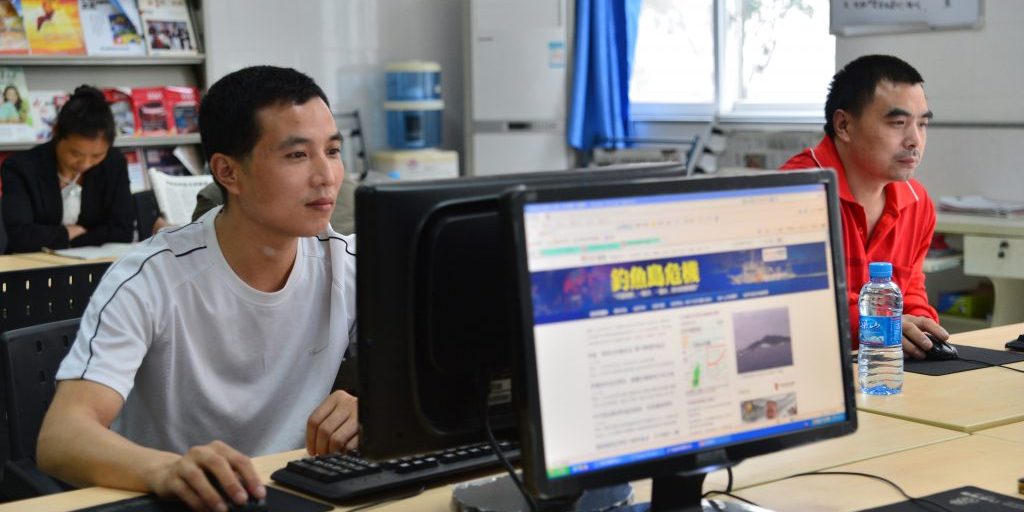Photo: Li Wenyong / World Bank
Authors: Jana Kuhnt and Kirsten Schuettler
Displaced people face many challenges when integrating into the labor market in their host communities. They are also more likely than the host population to be employed in sectors that are highly impacted by the COVID-19 pandemic, such as manufacturing, accommodation, and food services. And they are mostly employed informally, and thus have no job security or access to social safety nets during the COVID-19 related economic downturn. Share on X
So what can be done to help displaced people during this difficult time?
One solution is turning to digital technology. Digital technology can support labor market integration of the displaced during the pandemic, while taking into account the lessons learned on how jobs interventions need to be adapted for that population. Here are three examples.
1. Digital cash transfers and virtual public work programs
Due to the often unplanned nature of their flight, many displaced people lose access to their assets such as land and livestock without being able to sell them beforehand. They must also pay for their journey to safety, and have no income for a prolonged period. The pandemic puts them at additional risk of further depleting any remaining assets, which can hamper self-employment and entrepreneurship. Liquidity constraints can also prevent the displaced from searching for (better) jobs and force them to work under hazardous conditions.
Cash transfers, labor-intensive public works, or cash for work can help. To allow for implementation during lockdowns and social distancing, digital financial transfers like mobile money can be used to transfer the money to beneficiaries. In addition, compared to handing out cash, this has the added value of increasing financial inclusion. The work undertaken for cash for work or public work programs can be adapted to COVID-19 not only by taking social distancing into account within existing activities but also by developing virtual activities (such as digitization of physical assets or printed documents). Remote work offers opportunities for displaced people also beyond public works.
2. Virtual training and psychosocial support
Displaced people — for example farmers forced to move to urban areas — often lack skills or certifications required in the new labor market. Training can help them acquire the skills needed in the host labor market.
During the pandemic, training interventions can be implemented virtually if infrastructure allows. The content of the training should be adapted to actual economic opportunities where displaced people live and the sectors they are allowed to work in. Training should also be combined with further support to address the multiple obstacles the displaced face. Early evidence confirms that IT and language training (adapted to different levels and geared toward labor market entry) are particularly promising.
In addition, some of the displaced may benefit from psychosocial support to increase their employability and overall well-being. Different forms of therapy have had significant positive effects on the mental well-being of displaced populations, and they can be implemented in environments with few professional counsellors and psychotherapists, for example through lay counsellors with limited training. Emerging evidence shows that web-based psychosocial interventions can be effective, facilitating their implementation during the pandemic and beyond.
3. Digital platforms for networking
Displaced populations often lack social networks in host countries that could help them integrate into the labor market. Also, interaction and exchange between host and displaced population are particularly important to foster social cohesion and reduce social tensions. Restrictions due to the pandemic make it even more difficult to maintain and build up such networks and interactions. Virtual formats and platforms can be explored for community meetings, mutual support, and joint social activities to promote exchange and help displaced people build up networks during these times. Share on XEstablishing contacts as well as joint groups between the displaced and their hosts on social messenger services and social media can promote joint flow of information and communication.
Providing access to digital infrastructure is key
To be able to implement these digital solutions, the displaced and their hosts need access to the internet. There are several barriers, including availability of the digital infrastructure, affordability of services, and access to electricity to charge devices. Plus, refugees often lack the identity documents needed to access mobile services, including mobile money. While most displaced people in urban areas have the opportunity to access mobile coverage, those living in rural (often camp) settings are more likely to have no connectivity. Share on XNotably elderly and illiterate populations might also need additional support when using digital tools for the first time.
This blog was first published on The World Bank’s Jobs and Development blog.




